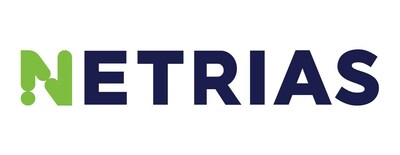ARLINGTON, Va. and ANNAPOLIS, Md., Dec. 13, 2023 /PRNewswire/ — In a joint effort spanning the Department of Defense and the Department of Health and Human Services, the Defense Advanced Research Projects Agency (DARPA) and the Advanced Research Projects Agency for Health (ARPA-H) have selected Netrias to increase its technological scope and applicability of PathEngine, a platform to predict bacterial pathogenicity of unknowns. Initially developed through a DARPA Small Business Technology Transfer award (STTR), PathEngine will leverage data generated by the Defense Threat Reduction Agency (DTRA) to increase pathogenicity prediction accuracy of unknown threats using revolutionary advances in automated data curation and multi-omics data integration.
The risk posed by unknown threats (bacterial and viral) is increasing as the global environment changes and populations expand. After new pathogens emerge, they can rapidly spread with increased global travel between dense urban centers. Any one of these unfamiliar strains might pose a health risk to deployed service members—especially first responders to infectious disease outbreaks [1].
Current biosurveillance strategies based on biochemical markers fall short in identifying potential threats as they do not work on undiscovered strains or those that evade detection through mutations. To overcome this problem, DARPA created the Friend or Foe Program to characterize threats by identifying pathogenic behavior itself (i.e., phenotypes). Technology developed through Friend or Foe can assess unknown bacteria for potential pathogenic behavior rapidly (e.g., days) and in high-throughput (e.g., 1000s to 1,000,000s) from complex environmental samples (e.g. soil). In effect, the systems play the biological equivalent of “Twenty Questions,” subjecting bacteria to a battery of both physical and chemical tests to determine pathogenicity [1].
Through a DARPA STTR, Netrias developed its software platform PathEngine, which uses artificial intelligence (AI) to both curate and model the multimodal data collected by the platforms to predict the pathogenic potential of bacteria. DARPA and ARPA-H are now increasing funding to support the automated curation and modeling of multi-modal, multi-omics data collected through DTRA to predict pathogenic potential bacteria. DTRA has also separately provided funding to expand the technology to viral threats. While incorporating multi-modal data can be advantageous, providing multiple perspectives, it is seldom used as collection, curation, and harmonization of multi-modal metadata and data remains a significant challenge for downstream analysis. Netrias’ AI Driven Data Harmonization capabilities streamline this process so that researchers can focus on the experiments and PathEngine will automatically curate the data. With a curated dataset, a multi-stage AI model then analyzes the data to predict the pathogenic potential of the threat. An initial prototype of the system can be found in their publication in the Proceedings of the National Academy of Sciences [2].
About Netrias
Netrias’ data-driven, in-silico platform bridges the gap between wet lab experimentation and bench intuition using machine learning and artificial intelligence optimized with expert knowledge. This robust combination enables real-world scientific insight to guide predictive modeling results and accelerate the scientific process. Our proven technology automates data curation and empowers life sciences experts with AI-ready data to rapidly and consistently generate breakthroughs. Our automated technology processes raw, unformatted assay data into AI-ready dataframes by isolating data from assay file formats, combining like and similar data, and correcting names, typos, unifying headers and other applicable information. Completed quickly and with minimal human curation, this harmonized data is ready for model analysis.
As an expert team of data scientists, microbiologists and software engineers, we utilize deployable, automated workflows and predictive modeling to streamline the entire data curation process from end-to-end, and determine the next steps in scientific validation and exploration. Visit Netrias’ website at www.netrias.com for more information.
[1] https://www.darpa.mil/program/friend-or-foe
[2] https://www.pnas.org/doi/10.1073/pnas.2112886119
![]() View original content to download multimedia:https://www.prnewswire.com/news-releases/multiagency-investment-in-ai-driven-data-harmonization-302012984.html
View original content to download multimedia:https://www.prnewswire.com/news-releases/multiagency-investment-in-ai-driven-data-harmonization-302012984.html
SOURCE Netrias

Featured image: Depositphotos © alpha spirit



